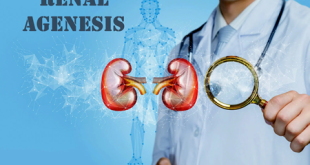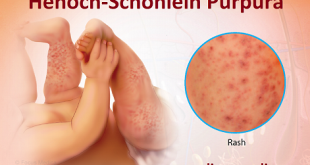Overview
Reactive arthritis is a condition that causes redness and swelling (inflammation) in various joints in the body, especially the knees, feet, toes, hips and ankles. It usually develops after you’ve had an infection, particularly a sexually transmitted infection or food poisoning. In most cases, it clears up within a few months and causes no long-term problems. Men and women of any age can get it, but it’s more common in men, and people aged between 20 and 40.
Pathophysiology
Reactive arthritis develops because of an infection that occurs in another part of the body. Even mild infections, which may go unnoticed, can cause reactive arthritis. This may be particularly true with chlamydial infections, which appear to be a rather frequent cause of it. The lack of a symptomatic, preceding infection in some cases obscures the diagnosis. The five bacterial infections most commonly associated with reactive arthritis are Chlamydia, Salmonella, Shigella, Yersinia, and Campylobacter. These bacteria usually cause gastrointestinal or genitourinary infections. Chlamydia is the most common cause of reactive arthritis in the United States and is usually acquired through sexual contact. Salmonella, Shigella, Yersinia, and Campylobacter may cause a gastrointestinal infection that can trigger reactive arthritis. Salmonella, Shigella, Yersinia, and Campylobacter are often acquired after eating contaminated food, handling improperly prepared food or coming into contact with the feces of a contaminated person. Less often, several other bacteria have been implicated as causative agents in reactive arthritis. However, some researchers reserve the term reactive arthritis only for those cases caused by the five abovementioned bacteria.
The exact underlying mechanisms that cause reactive arthritis are not fully understood. Researchers believe that it is an autoimmune disorder. An autoimmune disorder occurs when the body’s immune system mistakenly attacks healthy tissue. In reactive arthritis, a preceding infection induces an immune system response. Studies have demonstrated that the bacteria, or bacterial products, travel from the initial site of infection through the blood to the tissue lining the joints (synovial tissue). In the case of chlamydiae, these synovial-based organisms are viable, albeit in an aberrant state. The significance of these synovial-based organisms or bacterial products is not completely understood.
It is important to note that not everyone who develops these bacterial infections will develop reactive arthritis. In fact, reactive arthritis only develops in a minority of individuals exposed to one of the causative organisms. Researchers do not know exactly why some people develop reactive arthritis, while others do not. Some individuals may have a genetic predisposition to developing the disorder. Researchers have determined that many affected individuals have a particular, genetically-determined “human leukocyte antigen” (HLA) known as HLA-B27. HLAs are proteins that play an important role in the body’s immune system; they influence the outcome of organ transplants and appear to affect an individual’s predisposition to certain diseases. Specifically, the HLA-B27 antigen is present in many individuals with reactive arthritis and related disorders. However, it is important to note that the majority of patients who develop reactive arthritis are HLA-B27 negative, so the genetic component of reactive arthritis is not fully understood. Some researchers believe that HLA-B27 is a better indicator of disease severity rather than susceptibility.
Many people who have the HLA-B27 gene do not develop reactive arthritis even after contracting one of the abovementioned infections, which suggests that additional genetic (e.g., additional genes), environmental and/or immunologic factors may all play a role in the development of reactive arthritis. More research is necessary to determine the exact, underlying mechanisms that cause reactive arthritis.
What Causes Reactive Arthritis?
The bacteria induce (cause) arthritis by distorting your body’s defence against infections, as well as your genetic environment. How exactly each of these factors plays a role in the disease likely varies from patient to patient. This is a focus of research.
Reactive arthritis can have any or all of these features:
- Pain and swelling of certain joints, often the knees and/or ankles
- Swelling and pain at the heels
- Extensive swelling of the toes or fingers
- Persistent low back pain, which tends to be worse at night or in the morning
Some patients with this type of arthritis also have eye redness and irritation. Still other signs and symptoms include burning with urination and a rash on the palms or the soles of the feet.
Who is at risk for reactive arthritis?
Anyone can get reactive arthritis, and it occurs worldwide. A bacterial infection—in the digestive or urinary tract or the genitals—typically precedes it by a few weeks. Although sexually transmitted infections can occur just before the onset of reactive arthritis, many cases of it are associated with other types of infections that are not transmitted sexually. Certain factors increase the risk of the condition, including:
- Sex. Both men and women can get reactive arthritis, but men are more likely to develop it as a result of a sexually transmitted infection. Men and women are equally affected if the condition is from a gastrointestinal infection.
- Age. It occurs most often in people between ages 20 and 40.
- Genetics. People who have a gene called HLA-B27 have a higher risk of getting reactive arthritis and of experiencing more severe and more long-lasting symptoms. But people who lack HLA-B27 can still get the condition.
- HIV infection. Having AIDS or being infected with HIV increases the risk of reactive arthritis.
Symptoms
The signs and symptoms of reactive arthritis generally start 1 to 4 weeks after exposure to a triggering infection. They might include:
- Pain and stiffness. The joint pain associated with reactive arthritis most commonly occurs in the knees, ankles and feet. Pain may also occur in the heels, low back or buttocks.
- Eye inflammation. Many people who have reactive arthritis also develop eye inflammation (conjunctivitis).
- Urinary problems. Increased frequency and discomfort during urination may occur, as can inflammation of the prostate gland or cervix.
- Inflammation of tendons and ligaments where they attach to bone (enthesitis). This happens most often in the heels and the sole of the feet.
- Swollen toes or fingers. In some cases, toes or fingers might become so swollen that they look like sausages.
- Skin problems. Reactive arthritis can affect skin in a variety of ways, including mouth sores and a rash on the soles of the feet and palms of the hands.
- Low back pain. The pain tends to be worse at night or in the morning.
Health effects of reactive arthritis
With proper treatment, most people with reactive arthritis recover fully and can resume normal activities a few months after initial symptoms. However, arthritis symptoms may last up to a year, but they are usually mild and do not interfere with daily life.
Some people with reactive arthritis will have long-term, but mild, arthritis. Studies show that between 15 and 50 percent of patients will develop symptoms again, possibly due to re-infection. Back and joint pain are the symptoms that most commonly reappear. A few patients will have chronic, severe arthritis that is difficult to control with treatment and may cause joint damage.
How is reactive arthritis diagnosed?
The process starts with a health history and a physical exam. Diagnosis can be difficult. This is because there are no specific tests that can confirm the condition. Some blood tests may be done to rule out other conditions, such as rheumatoid arthritis and lupus. Other tests may include:
- Erythrocyte sedimentation rate (ESR or sed rate). This test looks at how quickly red blood cells fall to the bottom of a test tube. When swelling and inflammation are present, the blood’s proteins clump together and become heavier than normal. They fall and settle faster at the bottom of the test tube. The faster the blood cells fall, the more severe the inflammation.
- Tests for infections. This includes a test for chlamydia. It may also include tests for other infections that are linked to reactive arthritis.
- Joint aspiration (arthrocentesis). A small sample of the synovial fluid is taken from a joint. It’s tested to see if crystals, bacteria, or viruses are present.
- Urine and stool samples. These are used to look for bacteria or other signs of disease.
- X-rays. This test uses a small amount of radiation to create images of tissues, bones, and organs. X-rays are used to look for swelling or damage to the joint. This can check for signs of spondylitis or sacroiliitis.
- Gene testing. A test may be done to check for HLA-B27. This gene is seen more often in people with reactive arthritis. But not everyone who has this gene will get it.
You may also have testing to rule out other forms of arthritis.
Treating Reactive Arthritis
There’s no cure for reactive arthritis, but the condition is usually temporary and treatment can help to relieve your symptoms.
Most people will make a full recovery in about six months, although around one in five cases lasts a year or more, and a small number of people experience long-term joint problems.
There is also a risk you could develop the condition again after another infection.
Antibiotics
Antibiotics may not help to treat reactive arthritis itself, but they are sometimes prescribed if you have an ongoing infection – particularly if you have a sexually transmitted infection (STI). Your recent sexual partner(s) may also need treatment.
Non-steroidal anti-inflammatory drugs (NSAIDs)
Non-steroidal anti-inflammatory drugs (NSAIDs), such as ibuprofen, are the main medication used for reactive arthritis, as they can help to reduce inflammation and relieve pain.
However, taking a regular dose of a NSAID on a long-term basis can increase your risk of problems such as stomach ulcers. If you are at an increased risk of developing stomach ulcers, your GP may recommend an additional medication known as a proton pump inhibitor (PPI), which can protect your stomach by reducing the production of stomach acid.
Rarely, long-term use of NSAIDs can also slightly increase your risk of having a heart attack or stroke. Read more about the side effects of NSAIDs.
Steroid medication
Steroid medication (corticosteroids) may be recommended if your symptoms don’t respond to NSAIDs, or you’re unable to use NSAIDs.
Steroids work by blocking the effects of many of the chemicals the body uses to trigger inflammation.
A corticosteroid called prednisolone is usually the preferred choice. Prednisolone can be given as an injection into a joint or as a tablet. Eye drops are also available if you have inflamed eyes (conjunctivitis).
Around 1 in 20 people who take prednisolone will experience changes in their mental state, such as depression or hallucinations. Contact your GP as soon as possible if you notice any changes in your thoughts or behaviour.
Other side effects can include weight gain, acne, stomach ulcers and osteoporosis, although these should improve as your dose is decreased. Read more about the side effects of corticosteroids.
Disease-modifying anti-rheumatic drugs (DMARDs)
If your symptoms persist despite treatment with NSAIDs and/or corticosteroids, you may be prescribed a medication known as a disease-modifying anti-rheumatic drug (DMARD).
Like corticosteroids, DMARDs work by blocking the effects of some of the chemicals your immune system uses to trigger inflammation.
It can take a few months before you notice a DMARD working, so it’s important to keep taking medication even if you don’t see immediate results.
A DMARD called sulfasalazine is usually the preferred option. Common side effects of sulfasalazine include feeling sick, loss of appetite and headaches, although these usually improve once your body gets used to the medication.
DMARDs may also cause changes in your blood or liver, so it’s important to have regular blood tests while taking these medicines.
Self-care
Taking a proactive role in treatment is an important part of getting better. This process is called self-management.
Self-care for reactive arthritis includes making sure food is stored at proper temperatures and cooked properly. This helps prevent food borne bacteria that can cause it. Some sexually transmitted infections can trigger reactive arthritis. Using condoms may lower your risk.
Staying physically active is the key to keeping joints flexible. Too little movement can lead to joint stiffness. Strong muscles help protect joints. But it’s important to talk to a doctor before beginning an exercise program. Managing weight, eating a nutritious diet and getting a good balance of rest and activity each day are important, too.
Preventing Reactive Arthritis
The most effective way to reduce your risk of reactive arthritis is to avoid the STIs and bowel infections that most commonly cause the condition.
The most effective way of preventing STIs is to always use a barrier method of contraception, such as a condom, during sex with a new partner.
 Diseases Treatments Dictionary This is complete solution to read all diseases treatments Which covers Prevention, Causes, Symptoms, Medical Terms, Drugs, Prescription, Natural Remedies with cures and Treatments. Most of the common diseases were listed in names, split with categories.
Diseases Treatments Dictionary This is complete solution to read all diseases treatments Which covers Prevention, Causes, Symptoms, Medical Terms, Drugs, Prescription, Natural Remedies with cures and Treatments. Most of the common diseases were listed in names, split with categories.







